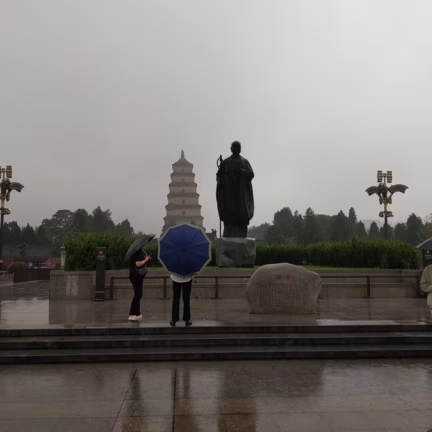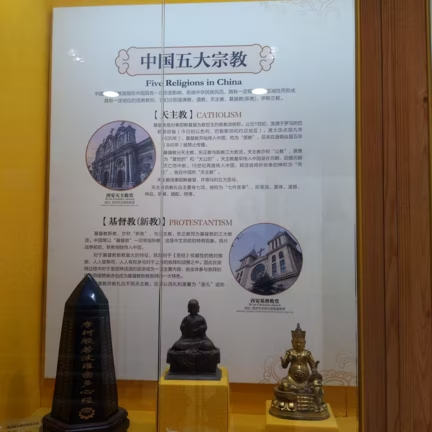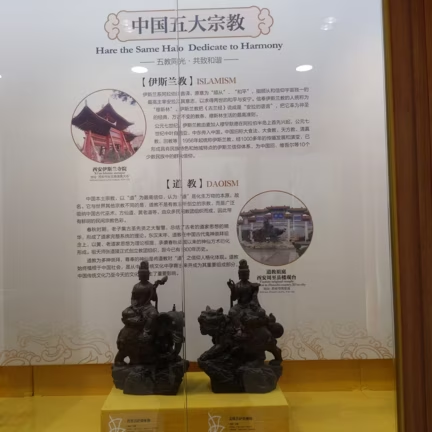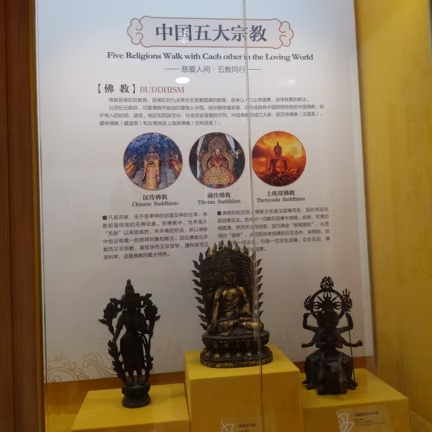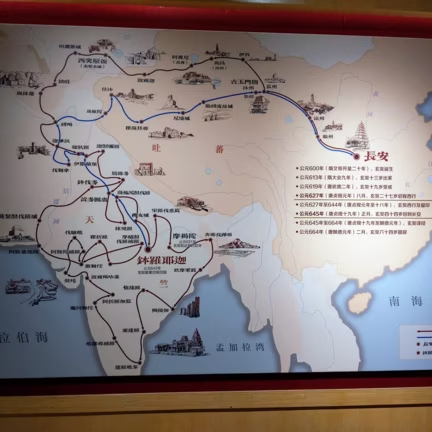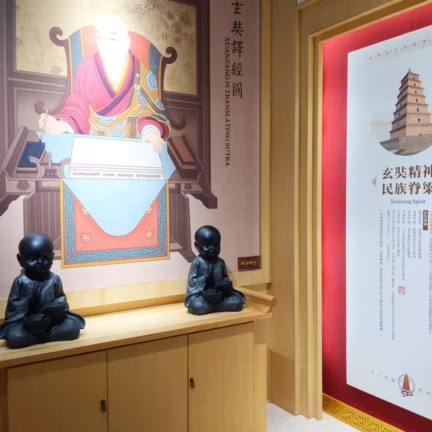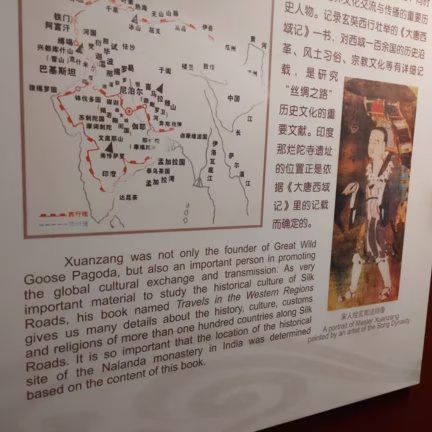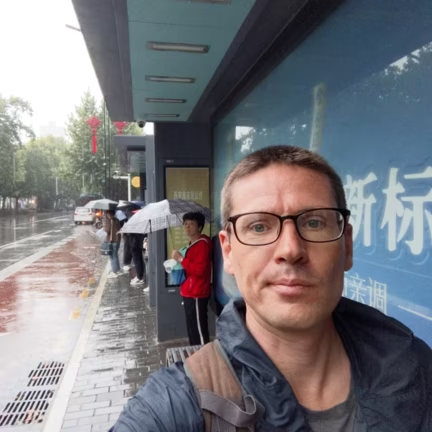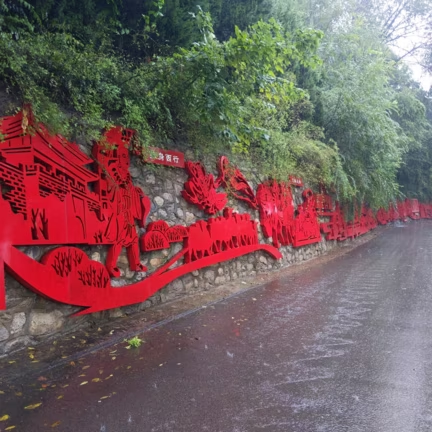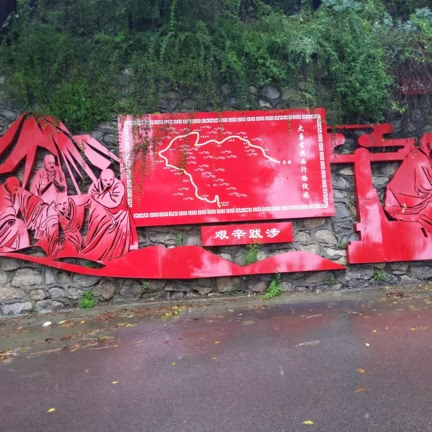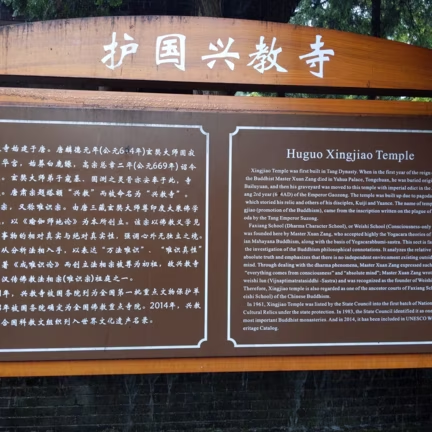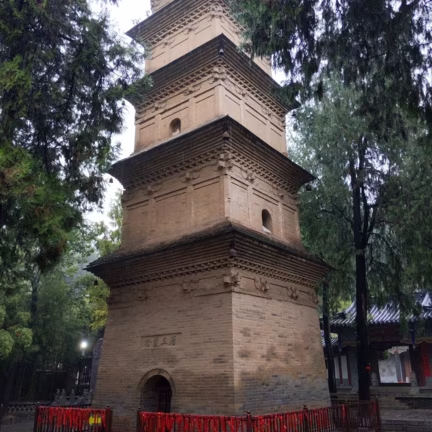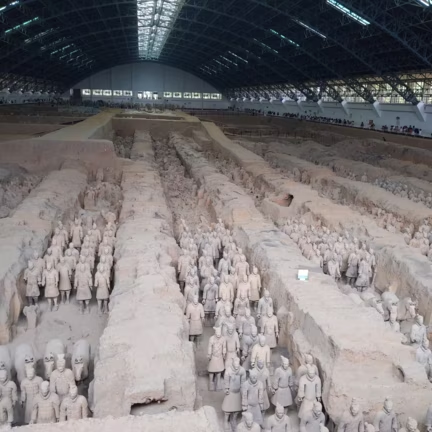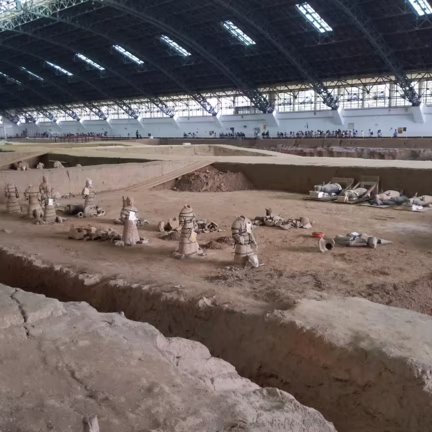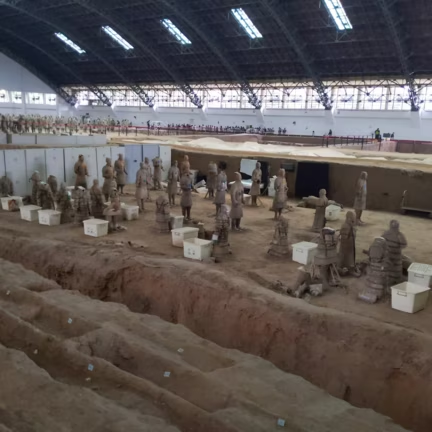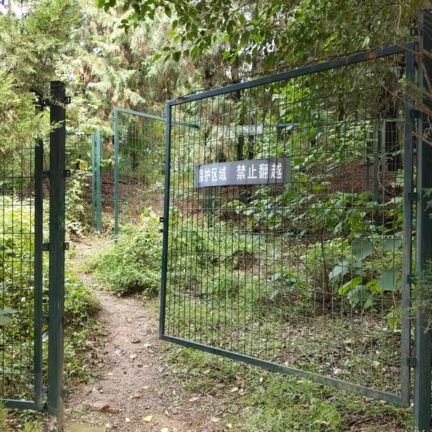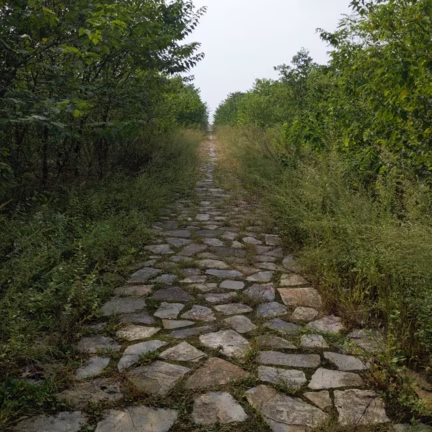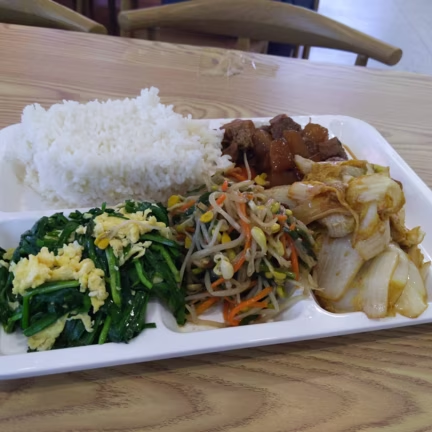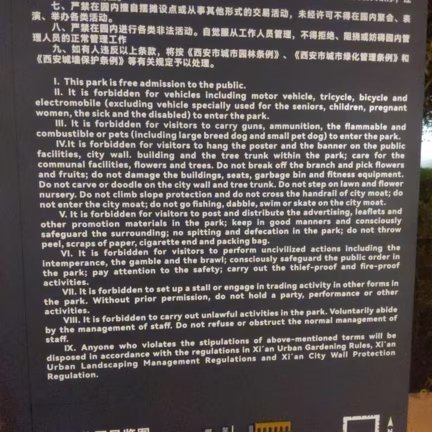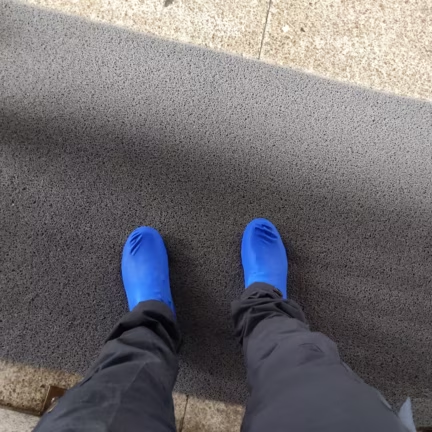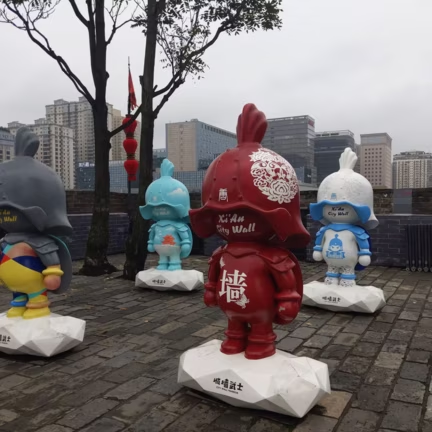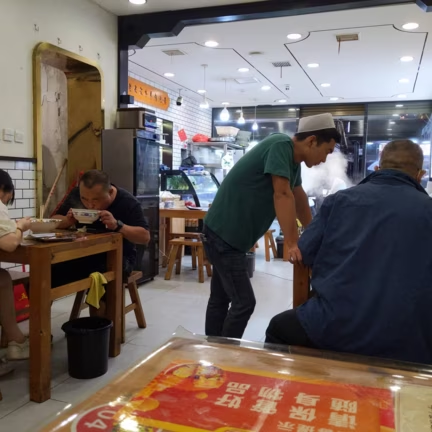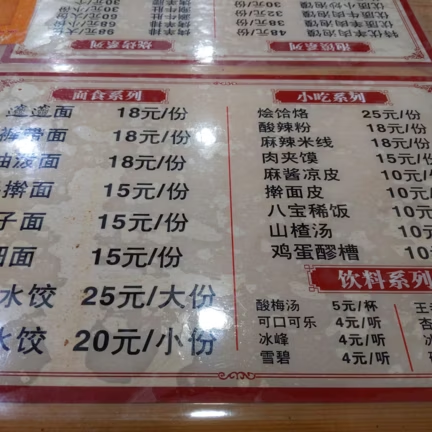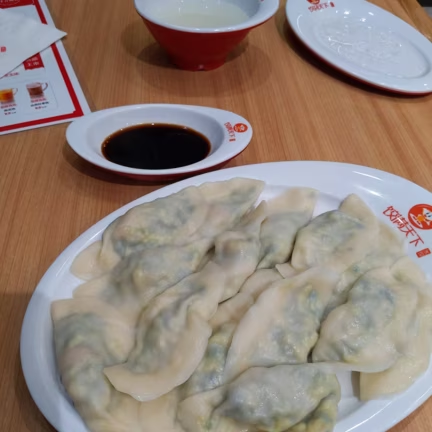| Duration | |
| Adventure |
Square dancing (Guangchangwu)
You see this everywhere in China. I love it.
Hui minority dance
This one you see in cities where the Hui minority, a muslim minority, is present.
- "How often do you do this ?"
- "Every day"
- "How often do you do this ?"
- "Every day"
Xuanzang - Wild Goose Pagoda
Xuanzang is one of my heroes.
Buddhism came from India to China through the silk road around the 1st century.
Sacred texts were translated by monks, and due to the difficulty and the length of sanskrit scriptures, it was often imperfect and incomplete.
In the 7th century, Xuanzang, a young buddhist monk, grew frustrated with the incoherences of the translations.
At age 27, he decides to travel to India to study the original texts.
His decision meant he had to go against his nation's ban on travel abroad and face great danger in a 2000 km journey across the Taklamakan desert and central Asia mountain ranges.
Here is how he described his journey:
"The purpose of my journey is not to obtain personal offerings.
It is because I regretted, in my country, the Buddhist doctrine
was imperfect and the scriptures were incomplete.
Having many doubts, I wish to go and find out the truth,
and so I decided to travel to the West at the risk of my life
in order to seek for the teachings of which I have not yet heard,
so that the Dew of the Mahayana sutras would have not only
been sprinkled at Kapilavastu, but the sublime truth may
also be known in the eastern country."
His trip took 17 years.
When he returned, he brought with him 600+ Sanskrit texts, with the help of a full scale caravan of 20+ horses.
He was welcomed by the emperor and offered a minister post, but he declined and devoted the rest of his life to translating the texts he brought back.
He set up a large translation office in Chang'an (present-day Xi'an), attracting students and collaborators from all over East Asia. For 20 years, until his death, he oversaw the translations of more than 1000 books of scriptures into Chinese.
He recorded his journey in a book named "Travels in the Western regions" which countains information about cultures, customs and religion of the regions he traversed.
600 years later, his story was the base for the fiction novel "Journey to the West", probably the most famous book in east Asia.
Xuanzang was a man who defied authority in his search for the truth and risked his life for what he believed in. He is a symbol of humility, resolve and courage.
In his life-long work towards improving the understanding of foreign texts, he built bridges between cultures.
Xuanzang oversaw the construction of the Wild Goose Pagoda, built to host and preserve the sutras he brought back.
Buddhism came from India to China through the silk road around the 1st century.
Sacred texts were translated by monks, and due to the difficulty and the length of sanskrit scriptures, it was often imperfect and incomplete.
In the 7th century, Xuanzang, a young buddhist monk, grew frustrated with the incoherences of the translations.
At age 27, he decides to travel to India to study the original texts.
His decision meant he had to go against his nation's ban on travel abroad and face great danger in a 2000 km journey across the Taklamakan desert and central Asia mountain ranges.
Here is how he described his journey:
"The purpose of my journey is not to obtain personal offerings.
It is because I regretted, in my country, the Buddhist doctrine
was imperfect and the scriptures were incomplete.
Having many doubts, I wish to go and find out the truth,
and so I decided to travel to the West at the risk of my life
in order to seek for the teachings of which I have not yet heard,
so that the Dew of the Mahayana sutras would have not only
been sprinkled at Kapilavastu, but the sublime truth may
also be known in the eastern country."
His trip took 17 years.
When he returned, he brought with him 600+ Sanskrit texts, with the help of a full scale caravan of 20+ horses.
He was welcomed by the emperor and offered a minister post, but he declined and devoted the rest of his life to translating the texts he brought back.
He set up a large translation office in Chang'an (present-day Xi'an), attracting students and collaborators from all over East Asia. For 20 years, until his death, he oversaw the translations of more than 1000 books of scriptures into Chinese.
He recorded his journey in a book named "Travels in the Western regions" which countains information about cultures, customs and religion of the regions he traversed.
600 years later, his story was the base for the fiction novel "Journey to the West", probably the most famous book in east Asia.
Xuanzang was a man who defied authority in his search for the truth and risked his life for what he believed in. He is a symbol of humility, resolve and courage.
In his life-long work towards improving the understanding of foreign texts, he built bridges between cultures.
Xuanzang oversaw the construction of the Wild Goose Pagoda, built to host and preserve the sutras he brought back.
Xuanzang - Tomb pagoda
Xuanzang's tomb, the place I wanted to visit the most in my trip.
Xingjiao temple lies in a small village 1 hour away from Xi'an. No tourist buses. It's a humble place. Good to see.
The pouring rain was fitting that day.
I took a local bus, then a 30 minute walk in the rain, passing by the depictions of Xuanzang's journey on the side of the road.
Xingjiao temple lies in a small village 1 hour away from Xi'an. No tourist buses. It's a humble place. Good to see.
The pouring rain was fitting that day.
I took a local bus, then a 30 minute walk in the rain, passing by the depictions of Xuanzang's journey on the side of the road.
Qin Shi Huang and Terra Cotta Warriors
People come here for the Terra Cotta Warriors. I was here for Qin Shi Huang Mausoleum, which I find more fascinating.
The Terra Cotta warriors are the guardians of the Mausoleum of Qin Shi Huang, the first emperor of China. His mausoleum, a few hundred meters away, is still untouched today. It is believed to hold a reproduction of the Chinese empire, with rivers of mercury and constellations in the ceiling. An underground world lit by lamps that were supposed to stay bright for eternity.
To this day, the secret entrance has not been found.
So, after a quick visit to the Terra Corra warriors, I happily left the crowd and headed to the site of the mausoleum.
It is burried inside a man-made hill. Like the pyramids, but bigger. Unfortunately, the hill itself is not accessible, you can only walk around, and the vegetation does not make it easy to get a good view of the hill.
It is worth noting that the memory of the first emperor of China is not much celebrated today, as 99% of the visitors are here only for the terra cotta warriors. Within a Dynasty, historians have reasons to paint past emperors in a positive light, to keep the image of the Dynasty intact. The Qin dynasty, however, was very short. Written accounts of his reign were the work of historians of the following Dynasty. They related the official narrative of their time, not surprisingly critical towards the Dynasty they toppled.
Still, I soaked in the historic significance of the place, a few dozens of meters away from the most mysterious, and possibly the most grandiose mausoleum of all time.
The Terra Cotta warriors are the guardians of the Mausoleum of Qin Shi Huang, the first emperor of China. His mausoleum, a few hundred meters away, is still untouched today. It is believed to hold a reproduction of the Chinese empire, with rivers of mercury and constellations in the ceiling. An underground world lit by lamps that were supposed to stay bright for eternity.
To this day, the secret entrance has not been found.
So, after a quick visit to the Terra Corra warriors, I happily left the crowd and headed to the site of the mausoleum.
It is burried inside a man-made hill. Like the pyramids, but bigger. Unfortunately, the hill itself is not accessible, you can only walk around, and the vegetation does not make it easy to get a good view of the hill.
It is worth noting that the memory of the first emperor of China is not much celebrated today, as 99% of the visitors are here only for the terra cotta warriors. Within a Dynasty, historians have reasons to paint past emperors in a positive light, to keep the image of the Dynasty intact. The Qin dynasty, however, was very short. Written accounts of his reign were the work of historians of the following Dynasty. They related the official narrative of their time, not surprisingly critical towards the Dynasty they toppled.
Still, I soaked in the historic significance of the place, a few dozens of meters away from the most mysterious, and possibly the most grandiose mausoleum of all time.
